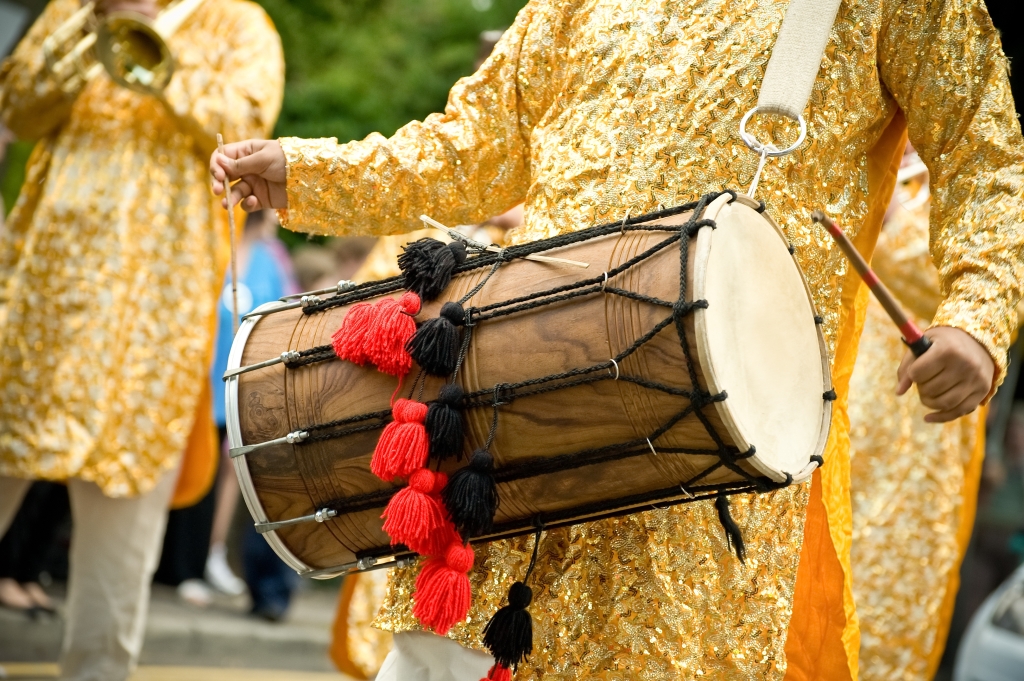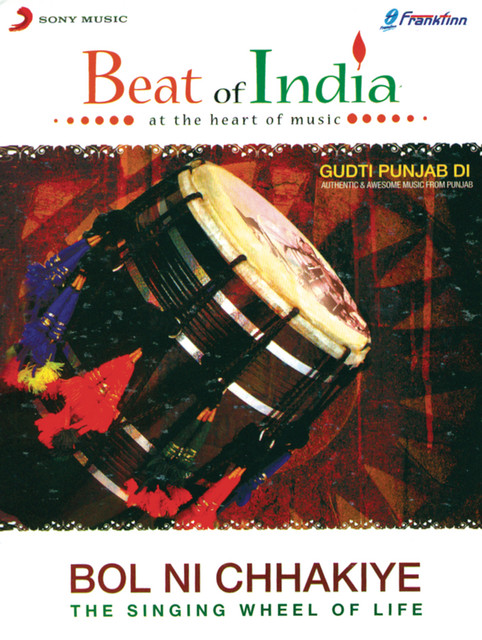
Continuing with this series we find ourselves back in the musical wonderland of Punjab. This collection is a very nice sampling of Punjabi folk singing with its unique and bold approach to percussion.
By way of introduction I am sharing just a few words from Gibb Schreffler, Associate Professor of Music & Ethnomusicology at Pomona College in California. He was the guest editor for a special music number of The Journal of Punjab Studies (downloadable here) that is an invaluable resource for all sorts of information about the music of that great South Asian culture.
“…all Punjabi communities make music in the Amateur World of performance, as indeed the music (broadly conceived) is more or less participatory and for one’s peers. However, these people are not “musicians” per se. The professional performance of music—that which is exclusionary, specialized, and/or for profit—has customarily been associated with or confined to particular communities that cohere according to one or another ethnic(caste/tribe/clan) identity. I call these “performer communities.” Some of these communities are associated primarily with music, while others are those in which music performance may occur, but it does not have a strong bearing on the group’s identity
as such. These communities stand in contrast to those who implicitly or explicitly reject public performance as a viable or socially appropriate behavior for their members.
The vast majority of professional musicians belong to the Scheduled Castes—indeed, they are among the most marginalized of them—or to the bureaucratic category of Backwards Castes. The general principal is that, regardless of the high degree of respect individual musicians may garner, the communities from which they come are overwhelmingly
those to whom society has given the lowest status. The question of the reason for an apparent correlation between being a musician and being of ‘low’ social status in South Asia (and beyond) is one of general philosophical interest that cannot be answered here.
Although individuals from the three major religious faiths do perform music professionally, relatively very few Sikhs (the majority religious community in the Indian state) perform music as an occupation. This activity largely consists of serving as sacred “musicians in gurdwaras or, more recently, as singers in the popular music industry. According to my theory of worlds of performance, these “exceptions” can be explained by the devotional intent of the first context and the mediated and modern mode of the second. The real explanation of the
statistical fact of few Sikh professional musicians is that fewer Sikhs belong to the ‘low’ status performer communities from which the musicians historically and customarily come.
In all, one will find the communities to which professional musicians belong to be the least well known, whether in popular imagination or scholarly writing. The following briefly introduces several of these performer communities. The bias is towards groups in the Indian Punjab, as those are the ones among whom I have done the most ethnographic work.
Dom
Dom is a widely distributed ethnic term in South Asia. The Dom are not a caste, rather, their historical presence suggests they once constituted a large scale tribe or what one might conversationally call a “race.” Specific reference to the Dom people occurs by the 2nd century BCE (Ghurye1969:313). Persian scholar al-Biruni (early 11th century) noted that the Dom were among those peoples located outside of and ranked beneath the four main classes of Indian society. Their occupation was to sing and play a lute (1919:101″2). Al-Biruni’s contemporary writer, Gardizi, mentioned a class of people called “Dunbi,” most likely the Dom. They were described in his writing as ‘black-skinned players on stringed instruments and dancers’ who occupied an untouchable class of society (Minorsky 1964:202-3). Throughout South Asia the Dom practice such professions as scavenger, executioner, basket-maker, musician, blacksmith, leatherworker, weaver—in short, occupations considered menial. One might speculate that the bulk of the castes that have been considered untouchable had their origin in some larger Dom base. In any case, the Dom are of nearly universal low social status.
One of the Punjabi branches of the Dom, locally called Dum, constitute a fairly distinct group from the larger ‘race’ as known in the rest of South Asia. The people best known as Dum in Punjab are hereditary musicians, bards, or genealogists. In fact, though the phenomenon of Dom people as musicians is wide spread, it may have its origins in the greater Punjab region (see Schreffler 2010:105). Importantly, the idea of Dom as a large-scale people or tribe engaged in many occupations underscores the fact that the occupation of musician overlaps with other occupations and duties, such as tailor, barber, circumciser, and basket-maker.
The Dum of the greater Punjab area were Jacks of several trades. Compare for example the role of the Dum in Pathan society, which extended to many rituals. During wedding rites of
the Khattak Pathans of the 19th century, Dums acted as go-betweens or assistants. Rose recorded that when the bride was taken to her husband’s home, a Dum rode along on the pony with her (1911:531), saying that ‘The Dum is throughout an important person and is fed on all occasions’ (ibid.:532).
The descendants of the Dum, spread among several sub-castes, make up an important community in Punjab. However, people are fairly unaware of them, in part due to the fact that the over-broad (and often regarded as pejorative) term “Dum” is rarely used. Musicians that appear to be from the larger Dum stock are currently divided among at least
three separate communities: Jogi, Mahasha, and Mirasi.” [To read further about these and other musician groups get the whole article).


